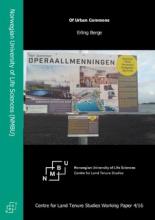/ library resources
Showing items 1 through 7 of 7.Urban surface morphology is an important key factor in determining the temporal variation of thermal anisotropy.
Land use development and transformation in informal settlements have been taking place because informal settlements have been alternative way of providing affordable housing to low income people.
Urban centres emerge, develop and expand. In the course of development or expansion, housing development on hilly landscapes may be more challenging than on relatively flat or flat terrains, forcing developers not to comply with building standards.
Uganda’s total population is projected to increase to 61 million by 2040 in the rations of 37million (60%) to 24million (40%) in the Urban to rural areas respectively.
FONCIER EN MAURITANIE : SITUATION, DÉFIS ET QUÊTE D’ADAPTATION(Article scientifique)Par Dr Ousmane WAGUE, coordinateur du master « Migrations, gouvernance foncière et territoriale »Université de Nouakchott Al Asria SommaireLE FONCIER EN MAURITANIE 
The paper is part of a joint presentation with Marius Grønning at the 5th International and Interdisciplinary Symposium of the European Academy of Land Use and Development (EALD) held in Oslo 3-5 September 2015.
In most countries, land consolidation was first introduced in rural areas, with legislation suitable for urban areas being drafted at a later date. This is also true of Norway. The first evidence of urban competency in the legislation is found in the Land Consolidation Act from 1950.
Land Library Search
Through our robust search engine, you can search for any item of the over 73,000 highly curated resources in the Land Library.
If you would like to find an overview of what is possible, feel free to peruse the Search Guide.



